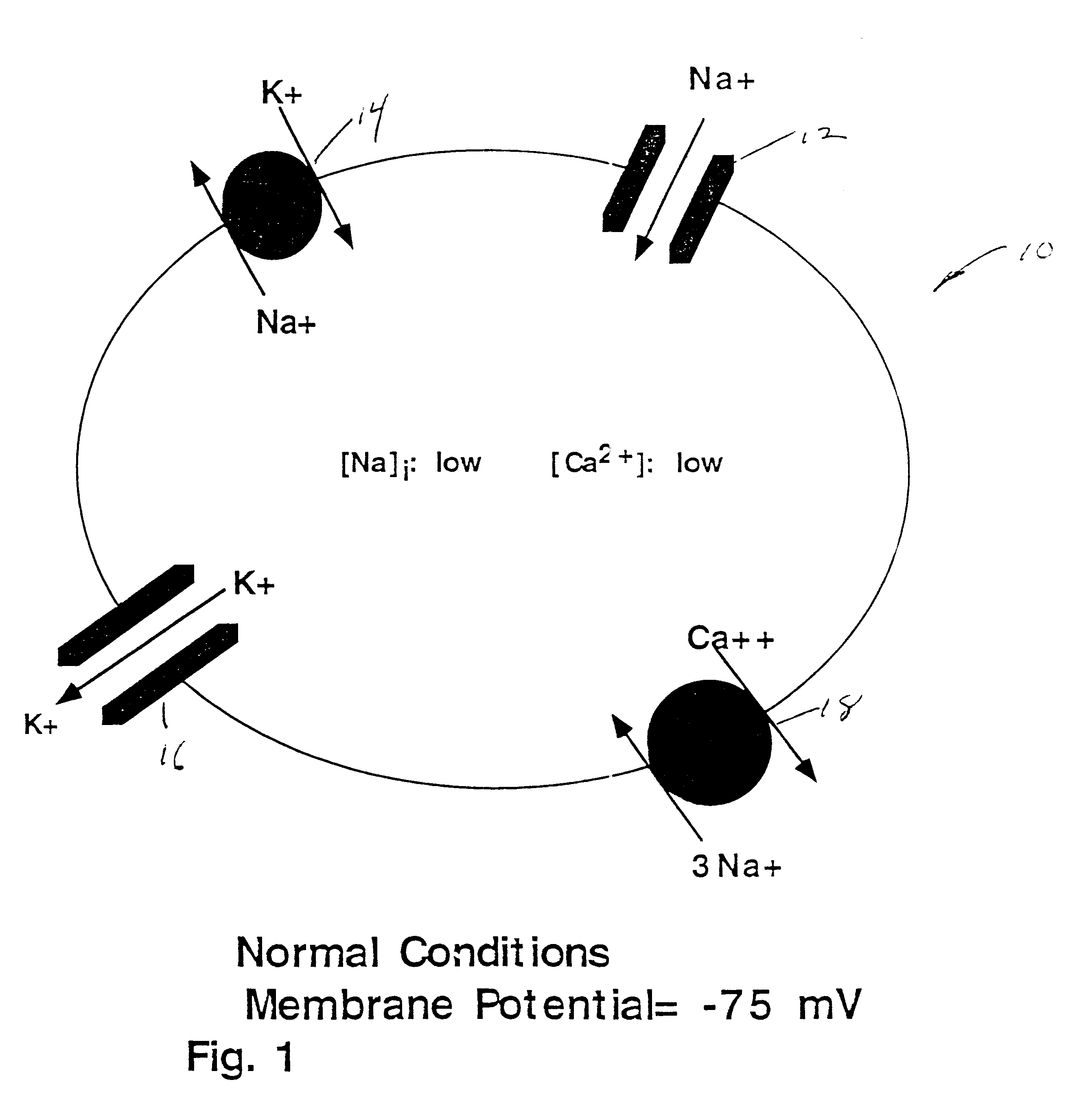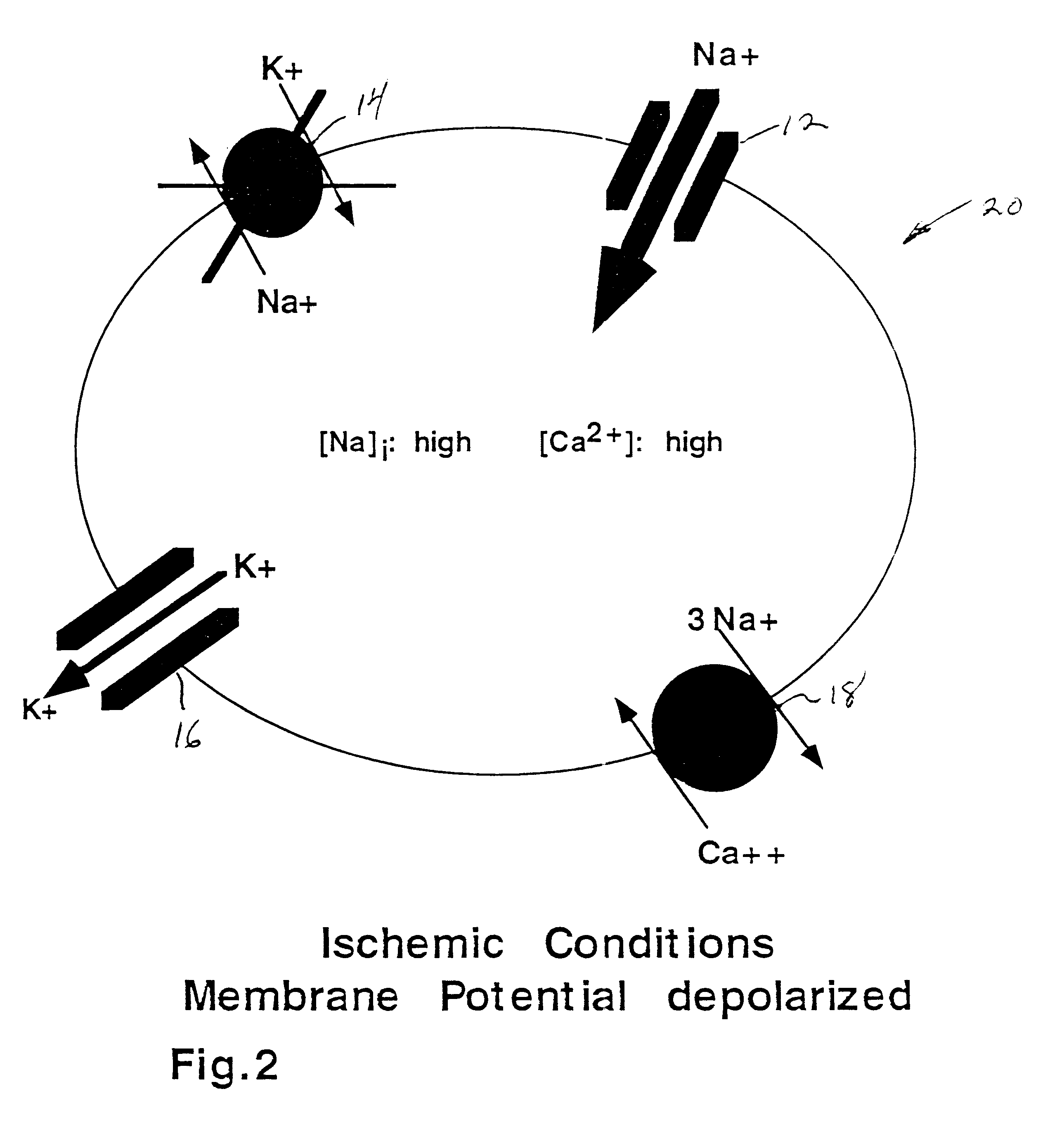Inhibition of noninactivating Na channels of mammalian optic nerve as a means of preventing optic nerve degeneration associated with glaucoma
a technology of mammalian optic nerve and inhibition of na channels, which is applied in the direction of biocide, drug composition, animal husbandry, etc., can solve the problems of serious health problems, insufficient or ineffective lowering of iop in preventing vision loss, and irreversible loss of visual function
- Summary
- Abstract
- Description
- Claims
- Application Information
AI Technical Summary
Benefits of technology
Problems solved by technology
Method used
Image
Examples
Embodiment Construction
FIG. 1 shows a representation of a retinal ganglion cell 10, under normal conditions and assumed relevant transport mechanisms 12, 14, 16, 18 responsible for maintaining the sodium (Na+), potassium (K.sup.+) and calcium (Ca.sup.2+) gradients and electrical activity of the cell. As shown under normal conditions ATP levels are adequate and furnish the fuel needed to drive the Na.sup.+ / K.sup.+ pump 14 that maintains the K.sup.+ and Na.sup.+ gradients, keeping intracellular concentrations of K.sup.+ high and Na.sup.+ low relative to their respective extracellular concentrations. The voltage-gated N.sup.+ and K.sup.+ channels 12, 16 provide the currents that make up the action potential. The electrogenic Na.sup.+ / Ca.sup.2+ exchanger 18 keeps cellular Ca.sup.2+ levels within the physiological range (nanomolar).
If, however, ATP levels should drop, due to some pathophysiological insult, the axon will depolarize and the Na.sup.+ / K.sup.+ gradients will collapse over time as a result of Na....
PUM
| Property | Measurement | Unit |
|---|---|---|
| concentration | aaaaa | aaaaa |
| intraocular pressures | aaaaa | aaaaa |
| intraocular pressure | aaaaa | aaaaa |
Abstract
Description
Claims
Application Information
 Login to View More
Login to View More - R&D
- Intellectual Property
- Life Sciences
- Materials
- Tech Scout
- Unparalleled Data Quality
- Higher Quality Content
- 60% Fewer Hallucinations
Browse by: Latest US Patents, China's latest patents, Technical Efficacy Thesaurus, Application Domain, Technology Topic, Popular Technical Reports.
© 2025 PatSnap. All rights reserved.Legal|Privacy policy|Modern Slavery Act Transparency Statement|Sitemap|About US| Contact US: help@patsnap.com


